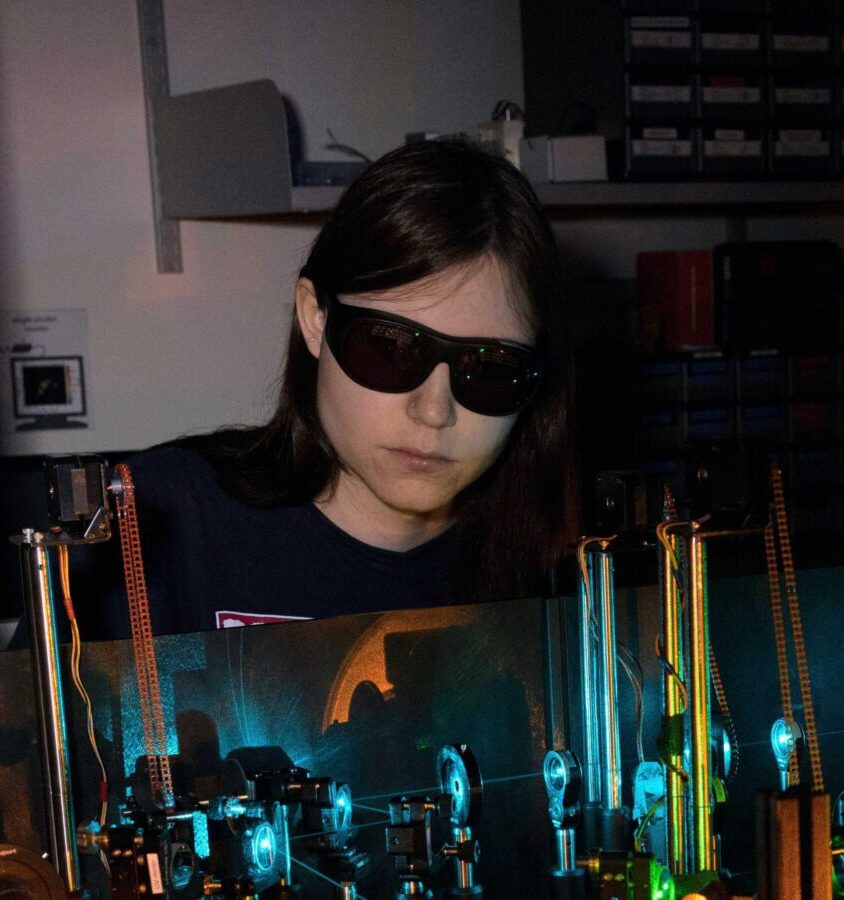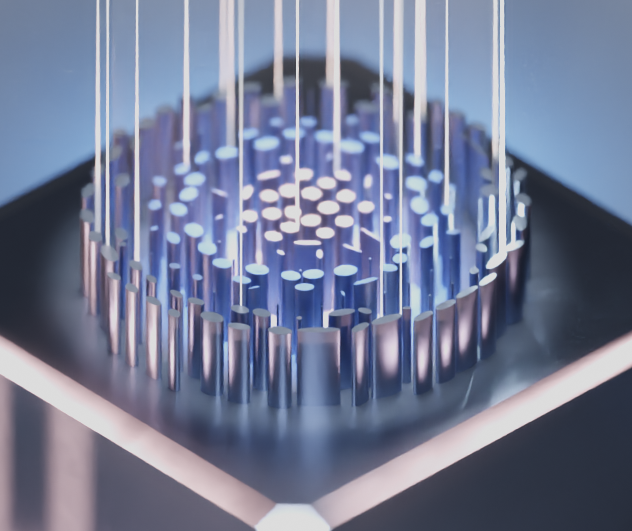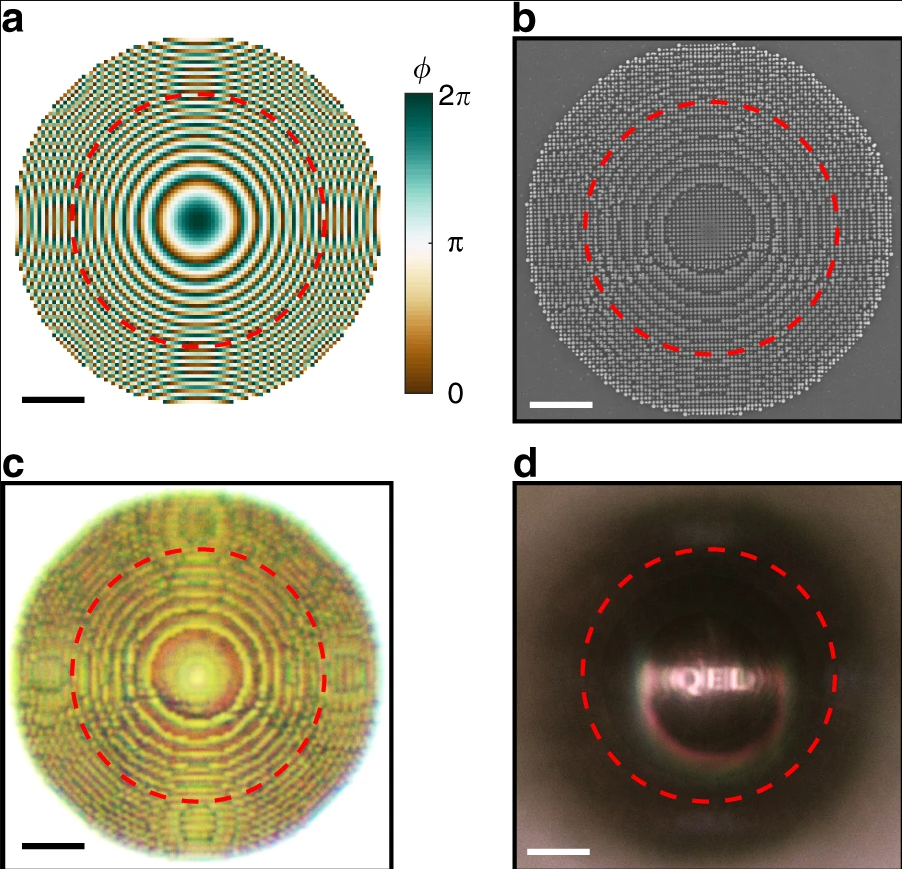
Amelia Klein
Ph.D. Student, Electrical Engineering
200 S. 33rd St
201 Moore Building
Philadelphia, PA 19104
Email: amklein@seas.upenn.edu
Phone: (215) 898-8312
Fax: (215) 573-2068
Amelia received a B.S. in Electrical Engineering from Columbia University in 2018, where she worked on DNA sequencing through graphene-gated nanopores. At Penn, she is currently working on the inverse design of metasurfaces in diamond to improve the optical interfaces to NV centers. Amelia was awarded a NSF Graduate Research Fellowship in 2019.

Minnella, Joseph D.; Ouellet, Mathieu; Klein, Amelia R.; Bassett, Lee C.
Single-gate, multipartite entanglement on a room-temperature quantum register Journal Article Forthcoming
In: arXiv, Forthcoming.
@article{Minnella2025,
title = {Single-gate, multipartite entanglement on a room-temperature quantum register},
author = {Joseph D. Minnella and Mathieu Ouellet and Amelia R. Klein and Lee C. Bassett},
url = {https://arxiv.org/abs/2508.08465},
year = {2025},
date = {2025-08-11},
urldate = {2025-08-11},
journal = {arXiv},
abstract = {Multipartite entanglement is an essential aspect of quantum systems, needed to execute quantum algorithms, implement error correction, and achieve quantum-enhanced sensing. In solid-state quantum registers such nitrogen-vacancy (NV) centers in diamond, entangled states are typically created using sequential, pairwise gates between the central electron and individual nuclear qubits. This sequential approach is slow and suffers from crosstalk errors. Here, we demonstrate a parallelized multi-qubit entangling gate to generate a four-qubit GHZ state using a room-temperature NV center in only 14.8 s 10 times faster than using sequences of two-qubit gates. The entangled states are verified by measuring multiple quantum coherences. Two-qubit entangling gates have an average fidelity of 0.96(1), and the four-qubit parallel gate has a fidelity of 0.92(4), whereas the sequential four-qubit gate fidelity is only 0.69(3). The approach is generalizable to other solid-state platforms, and it lays the foundation for scalable generation and control of entanglement in practical devices. },
keywords = {},
pubstate = {forthcoming},
tppubtype = {article}
}

Klein, Amelia R.; Engheta, Nader; Bassett, Lee C.
Designing metasurface optical interfaces for solid-state qubits using many-body adjoint shape optimization Journal Article
In: Optics Express, vol. 32, iss. 22, pp. 38504-38515, 2024.
@article{Klein2024,
title = {Designing metasurface optical interfaces for solid-state qubits using many-body adjoint shape optimization},
author = {Amelia R. Klein and Nader Engheta and Lee C. Bassett},
url = {https://opg.optica.org/oe/fulltext.cfm?uri=oe-32-22-38504&id=561330
https://arxiv.org/abs/2406.08212},
doi = {10.1364/OE.522501},
year = {2024},
date = {2024-10-09},
urldate = {2024-10-09},
journal = {Optics Express},
volume = {32},
issue = {22},
pages = {38504-38515},
abstract = {We present a general strategy for the inverse design of metasurfaces composed of elementary shapes. We use it to design a structure that collects and collimates light from nitrogen-vacancy centers in diamond. Such metasurfaces constitute scalable optical interfaces for solid-state qubits, enabling efficient photon coupling into optical fibers and eliminating free-space collection optics. The many-body shape optimization strategy is a practical alternative to topology optimization that explicitly enforces material and fabrication constraints throughout the optimization, while still achieving high performance. The metasurface is easily adaptable to other solid-state qubits, and the optimization method is broadly applicable to fabrication-constrained photonic design problems.},
keywords = {},
pubstate = {published},
tppubtype = {article}
}

Huang, T -Y; Grote, R R; Mann, S A; Hopper, D A; Exarhos, A L; Lopez, G G; Klein, A R; Garnett, E C; Bassett, L C
Imaging a nitrogen-vacancy center with a diamond immersion metalens Journal Article
In: Nature Communications, vol. 10, no. 2392, 2019.
@article{Huang2019,
title = {Imaging a nitrogen-vacancy center with a diamond immersion metalens},
author = {T -Y Huang and R R Grote and S A Mann and D A Hopper and A L Exarhos and G G Lopez and A R Klein and E C Garnett and L C Bassett},
url = {https://www.nature.com/articles/s41467-019-10238-5
https://medium.com/penn-engineering/penn-engineers-design-nanostructured-diamond-metalens-for-compact-quantum-technologies-271adddf69ba},
year = {2019},
date = {2019-06-03},
journal = {Nature Communications},
volume = {10},
number = {2392},
abstract = {Quantum emitters such as the diamond nitrogen-vacancy (NV) center are the basis for a wide range of quantum technologies. However, refraction and reflections at material interfaces impede photon collection, and the emitters’ atomic scale necessitates the use of free space optical measurement setups that prevent packaging of quantum devices. To overcome these limitations, we design and fabricate a metasurface composed of nanoscale diamond pillars that acts as an immersion lens to collect and collimate the emission of an individual NV center. The metalens exhibits a numerical aperture greater than 1.0, enabling efficient fiber-coupling of quantum emitters. This flexible design will lead to the miniaturization of quantum devices in a wide range of host materials and the development of metasurfaces that shape single-photon emission for coupling to optical cavities or route photons based on their quantum state.},
keywords = {},
pubstate = {published},
tppubtype = {article}
}
